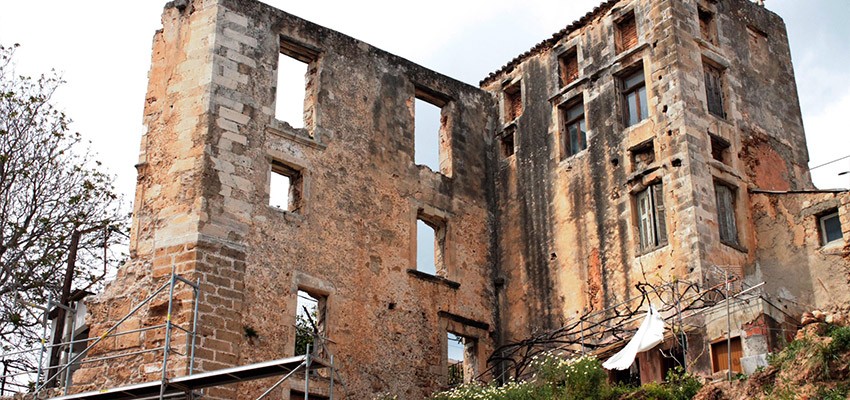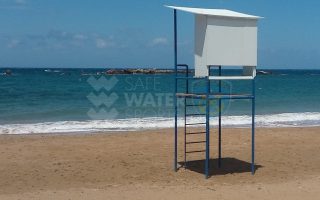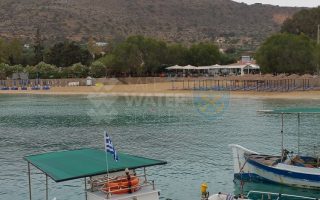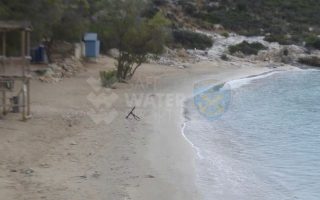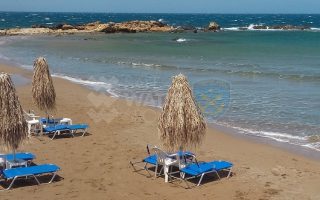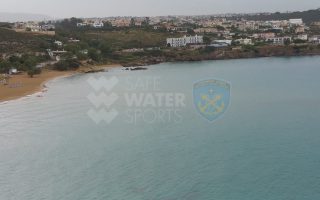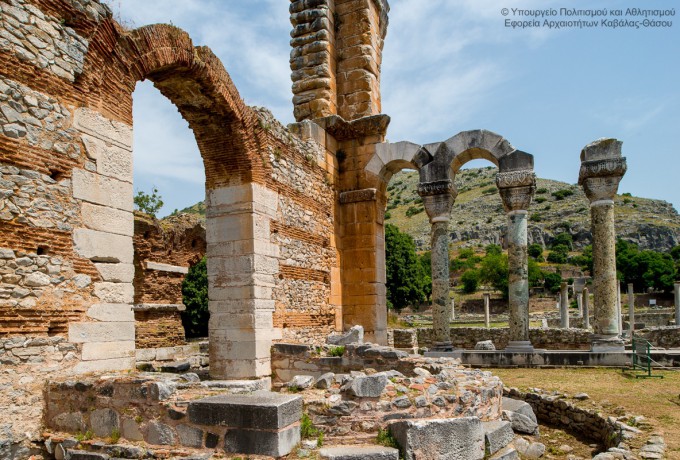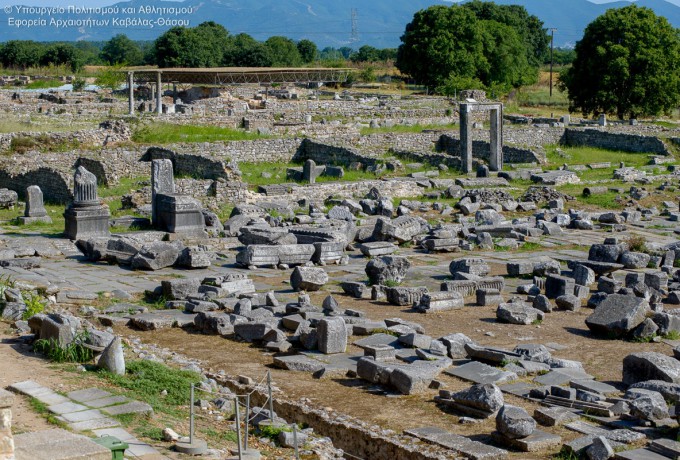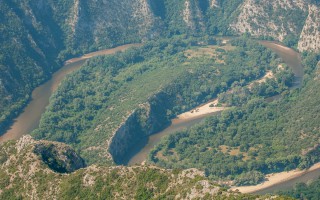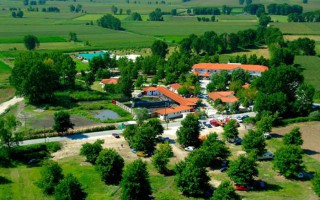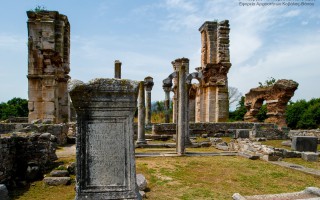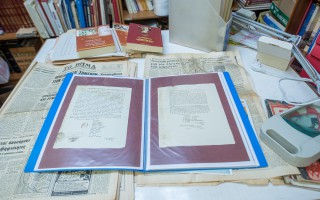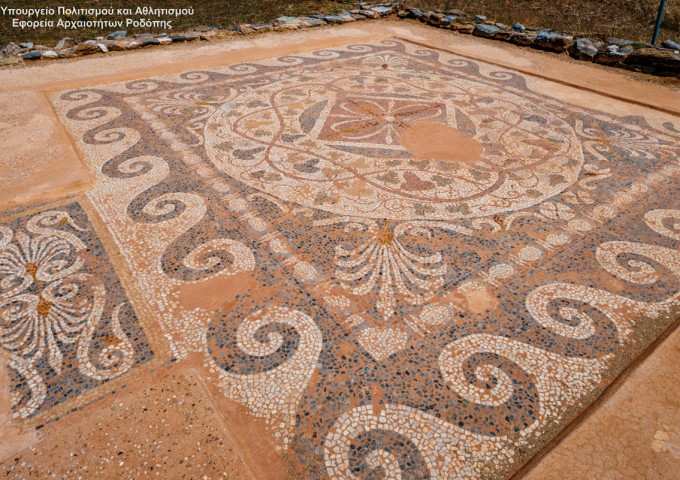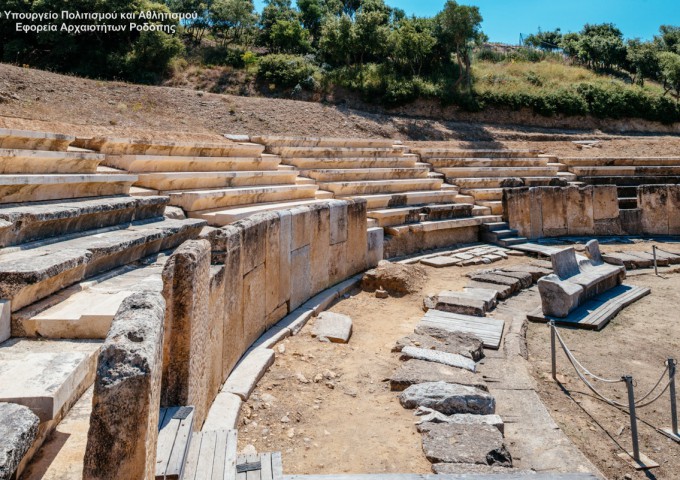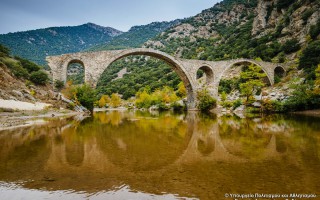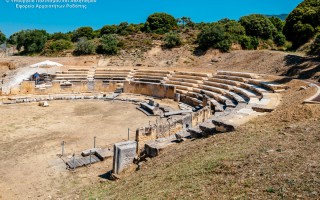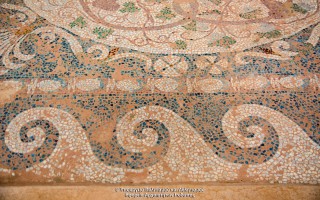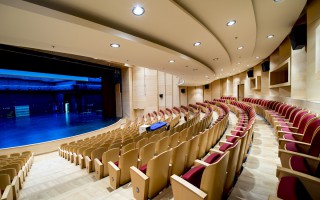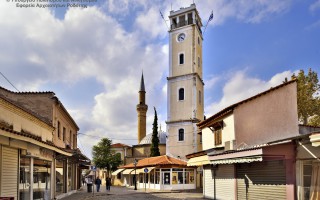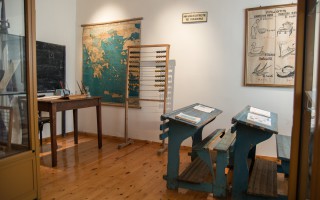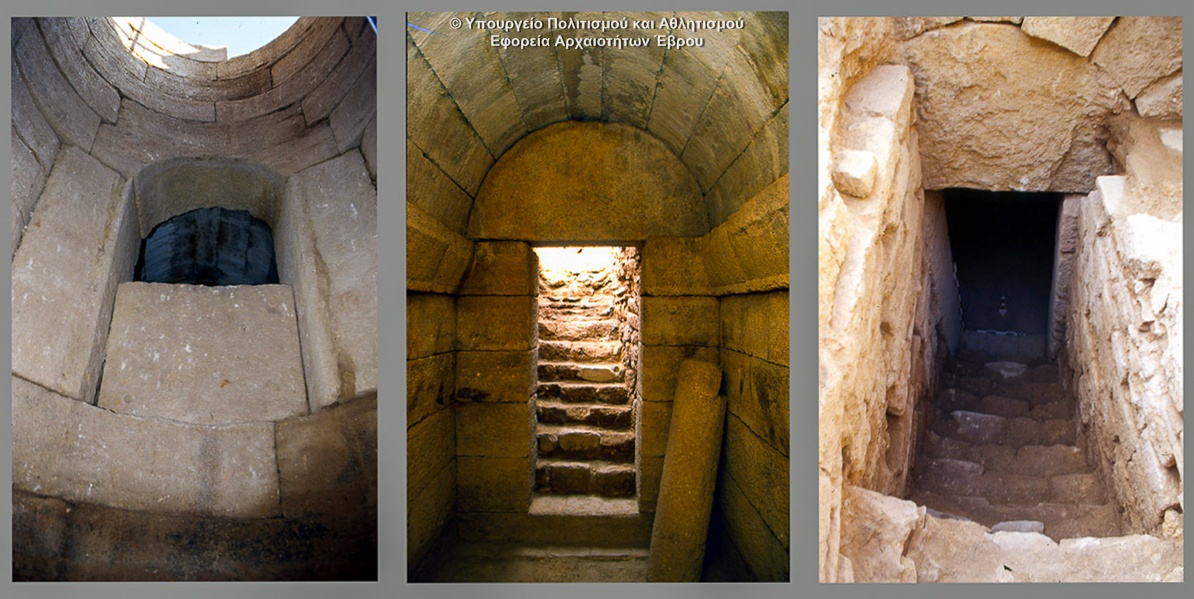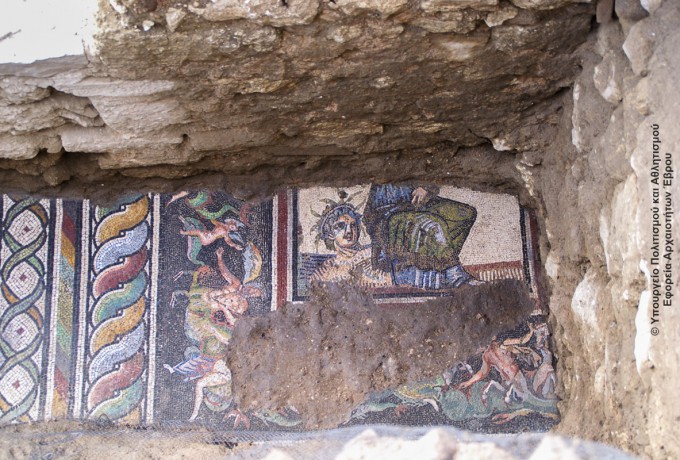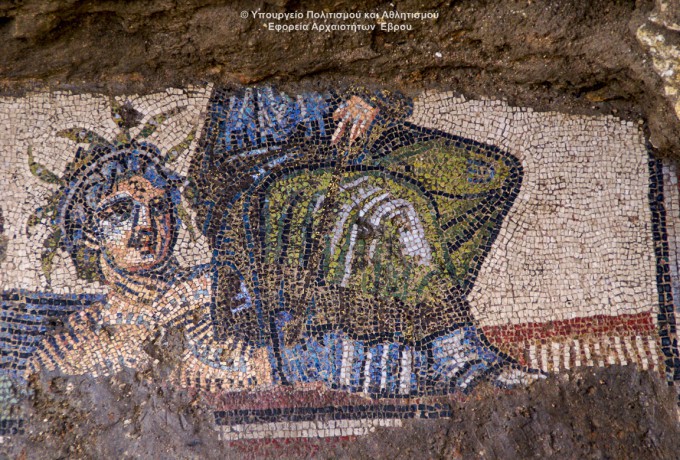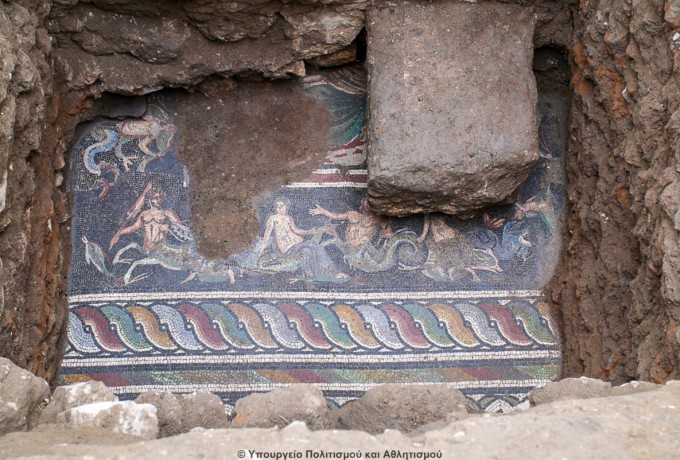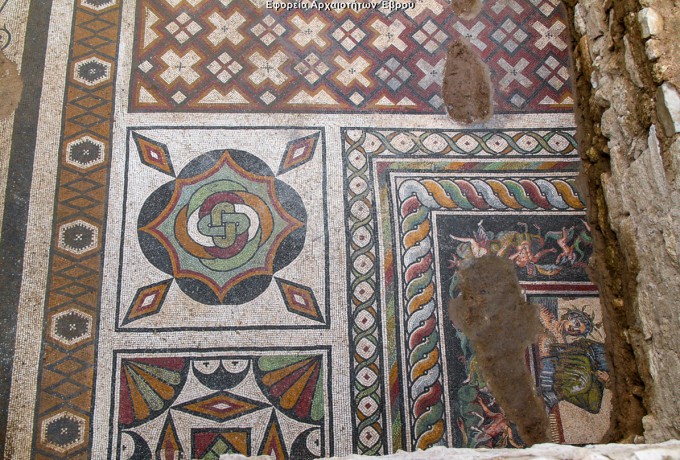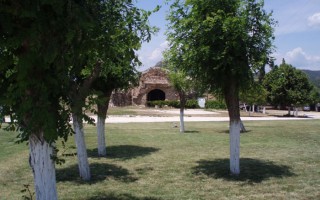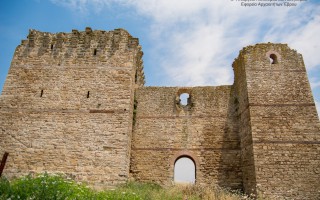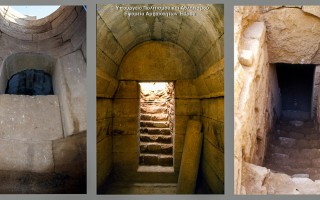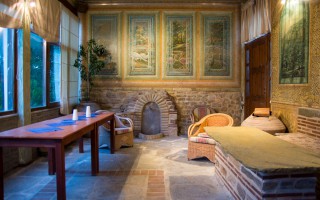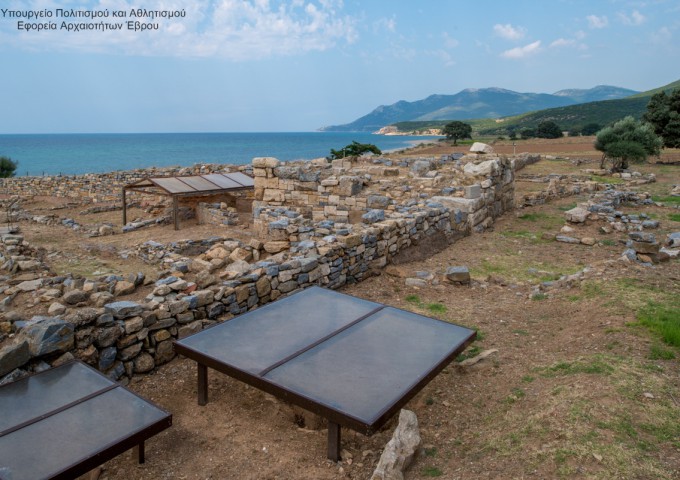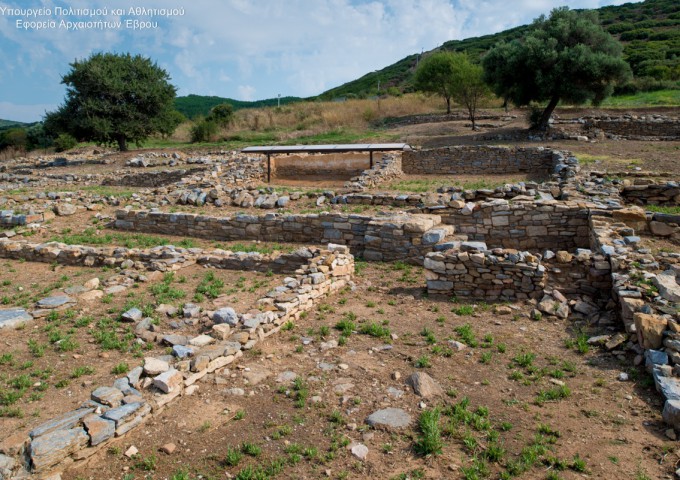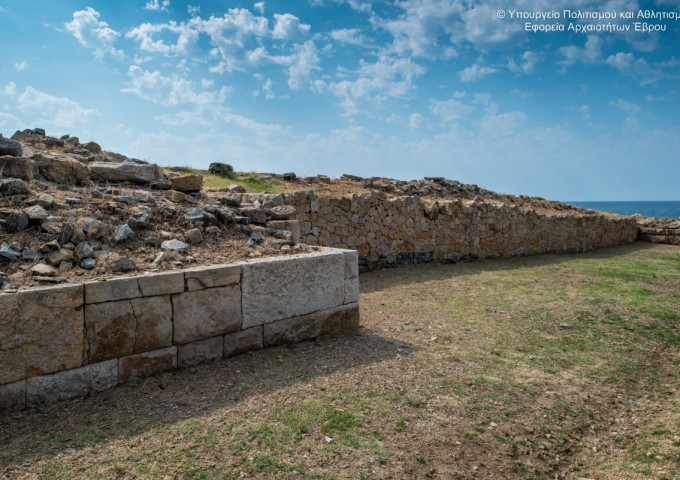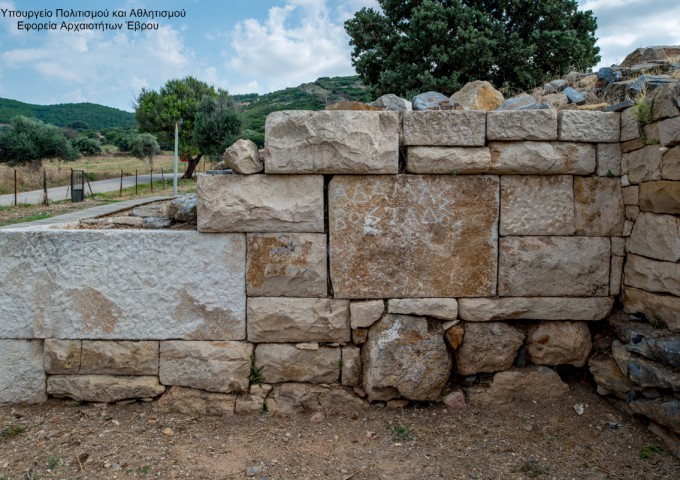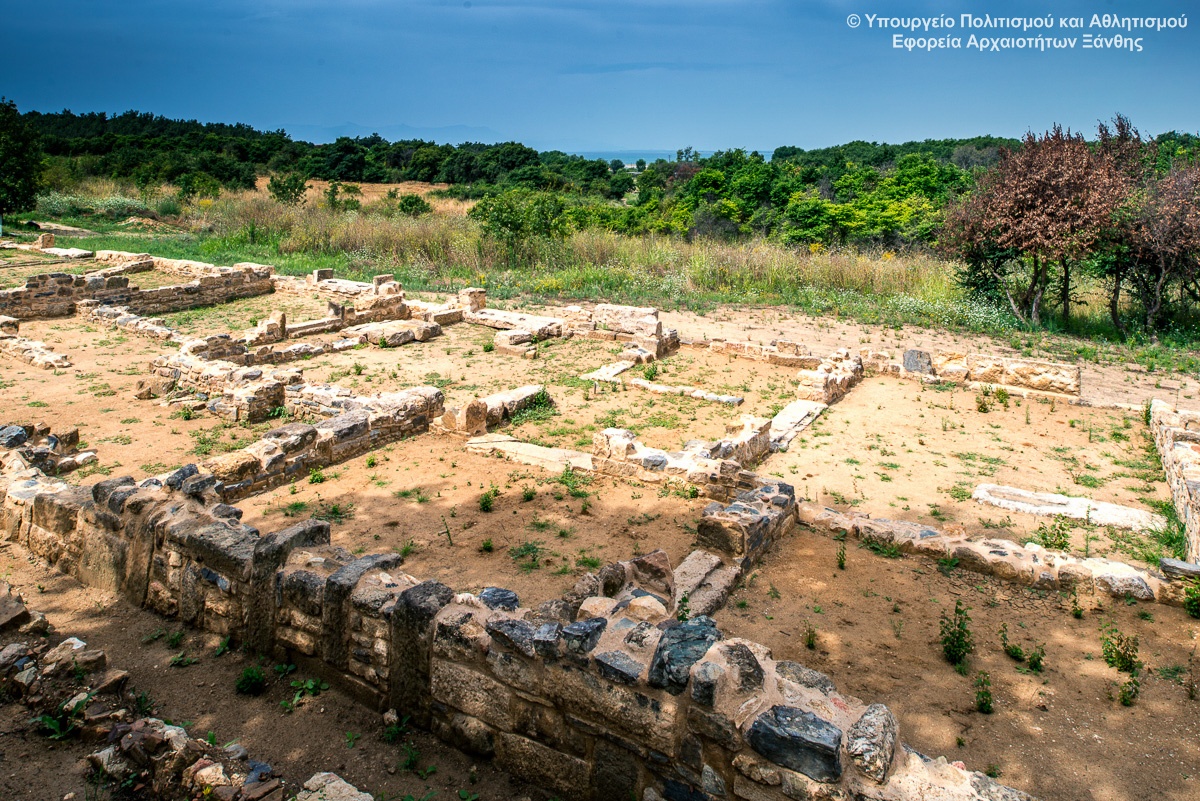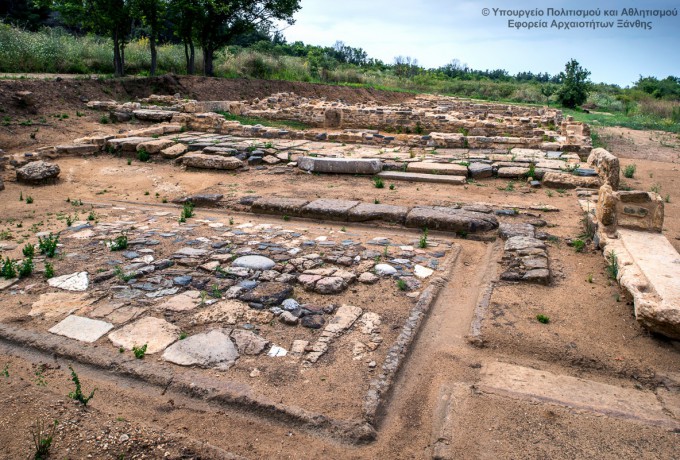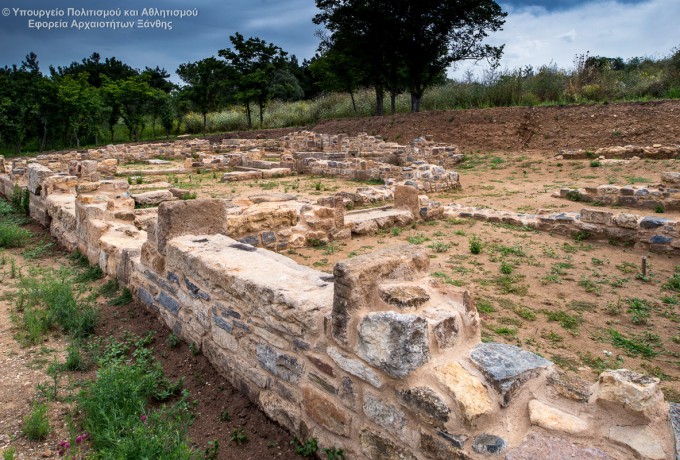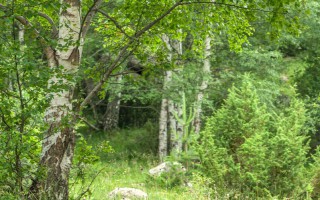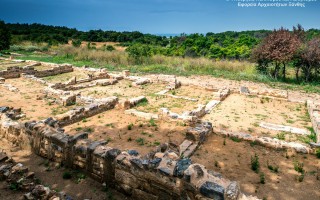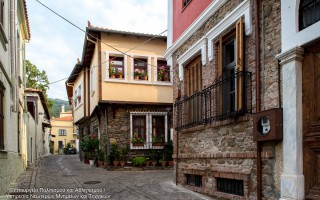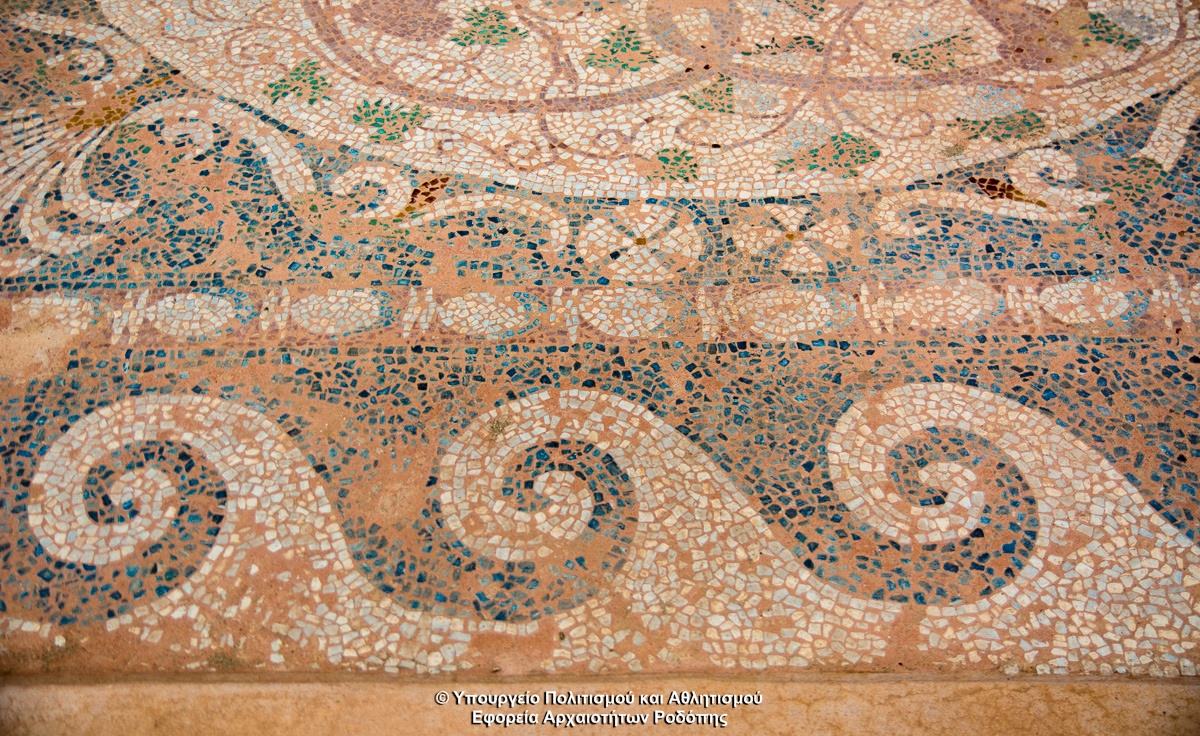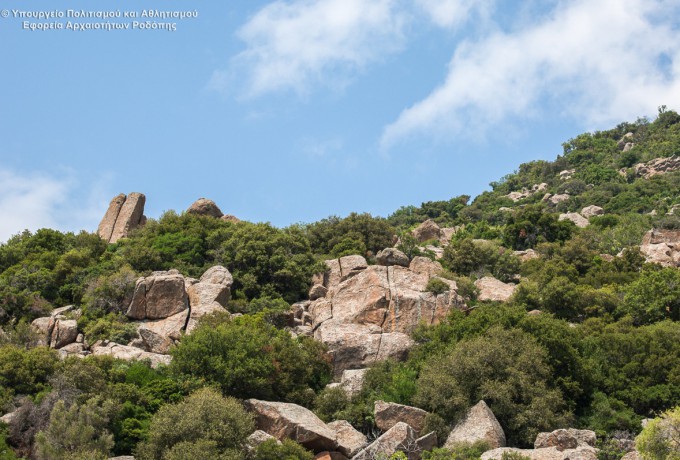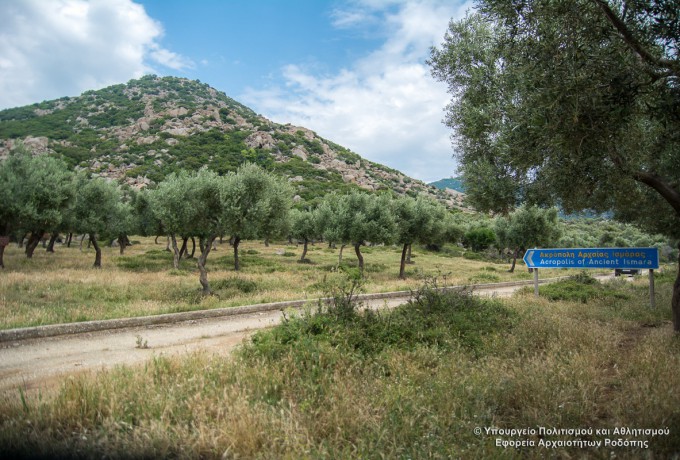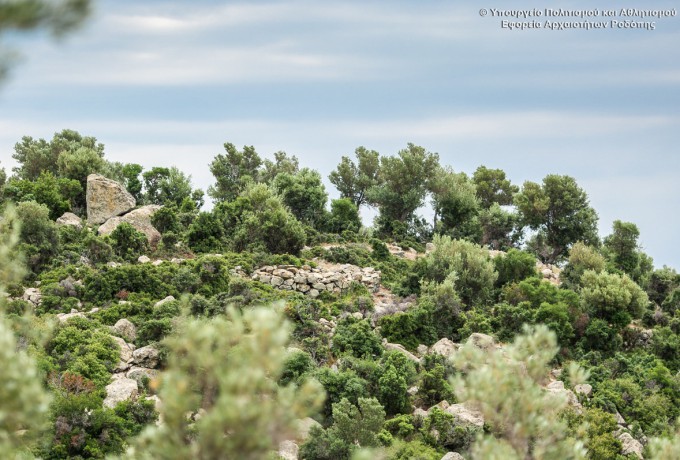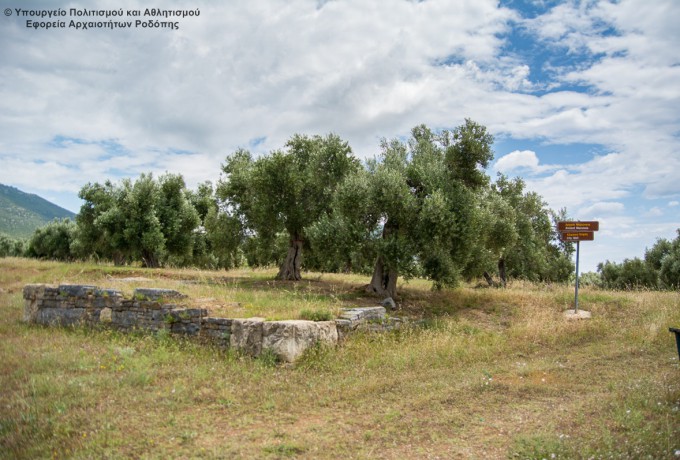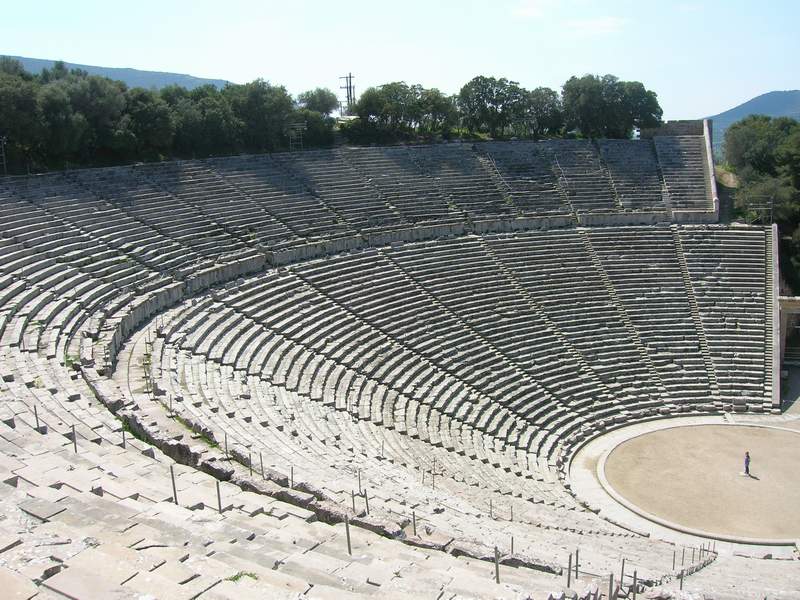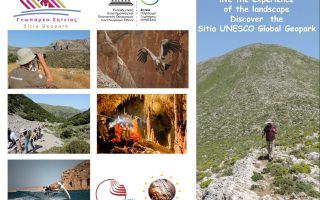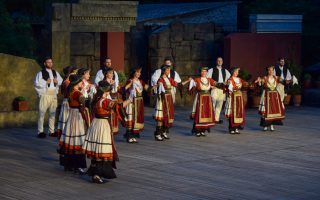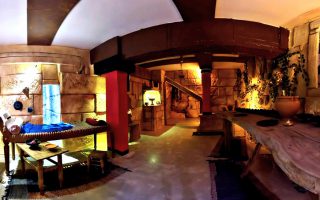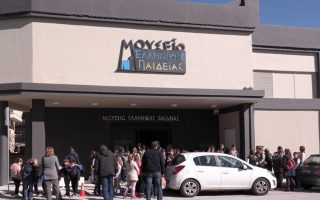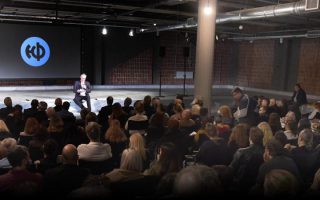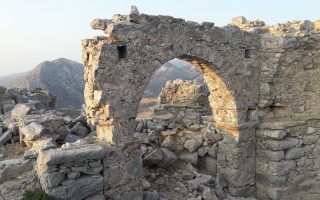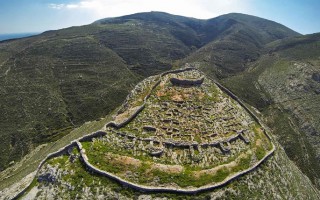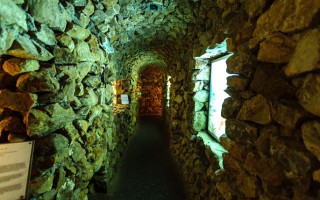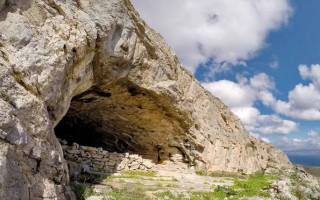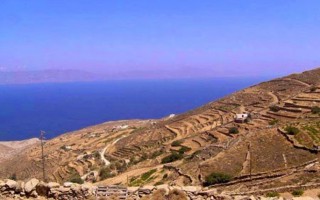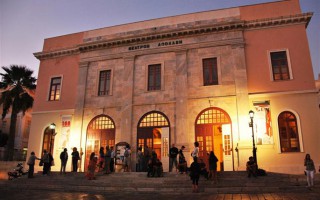The rich archaeological material, collected through long periods of excavations conducted by the 13th Ephorate of Byzantine Antiquities in the Prefecture of Chania, but also through search and donations, forms a Collection which clearly reflects the historical course of the west-end Prefecture of Crete from the paleochristian times to the ottoman rule. Representative specimens of this Collection are exhibited in the church of San Salvatore.
The aim of the exhibition of the Collection is to outline the historical and artistic profile of the prefecture of Chania during the Byzantine and Post-Byzantine times. The exhibits were grouped in the following units: Mosaics, tomb inscriptions, frescoes, icons, architectural sculptures, ceramic works and miniature art, coins.
The works of each unit are presented in chronological succession. Maps and tables inform the visitor about the origin of the exhibits and the historical context of their time.
Telephone: +3028210 96046
Accessible for people with special needs: ΝΑΙ
Source: www.incrediblecrete.gr
Located 15 km from Kavala in Krinides and is one of the most important historical sites in the area. Founded by the father of the Great Alexander and took his name.
 Includes, the ancient theater of Philippi (where every summer is organised the homonymous Festival), the Forum and the commercial market, the palaestra, the islands with private houses and early Christian churches. It was founded by Thassian settlersin 360 BC. Very soon, in 356 BC, Thassians, as to face the local Thracian tribes sought the help of Philip II, the father of Alexander the Great. Philip B. recognizing the prime location of the city, gave it his name.
Includes, the ancient theater of Philippi (where every summer is organised the homonymous Festival), the Forum and the commercial market, the palaestra, the islands with private houses and early Christian churches. It was founded by Thassian settlersin 360 BC. Very soon, in 356 BC, Thassians, as to face the local Thracian tribes sought the help of Philip II, the father of Alexander the Great. Philip B. recognizing the prime location of the city, gave it his name.
The passing of the Egnatia Via through the Philippi area in the 1st century. BC gave the greater weight to the city, and turned it into a benchmark of the region. In 42 BC the Battle of Philippi in the two low hills outside the western city walls caused changes in local and global level. The win of Octavian and Antony, continuing of the policy of Julius Caesar marked the end of democracy , openind the Octavian way for the empire. The site of philippi became a Roman colony (Colonia Augusta Julia Philippensis) who flourished in the second century in 20 sentury AD.
he 49/50 AD Apostole Paul visited the Philippi and founded the first Christian community in Europe. The memory of the visit and his imprisonment remained deeply in the memory and gave an ecumenical Christian pilgrimage character. The city is shrinking in the early of 7th century because of large earthquakes and Slavic raids. Survives in Byzantine times as a fortified castle, keeping its importance due to its location on the main East-West artery land. The complete abandonment occurred with the Turkish conquest in the late of 14th century.
Source: Eastern Macedonia & Thrace
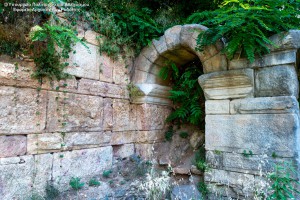 Excavations of the site started in the late 1960’s and have brought to light:
Excavations of the site started in the late 1960’s and have brought to light:
The theatre of the city, in which two architectural phases are distinguished, dated to the Hellenistic and Roman periods.
A sanctuary, probably of Dionysos, dated to the 4th century B.C. , a large Hellenistic house with a mosaic floor, two extensive building complexes, most probably of public function, also dated to the Hellenistic period, parts of the fortification wall of the Classical city.
It was constructed in the Hellenistic period and remodelled in Roman times. Preserved are: three rows of stone seats of the cavea, the central and the horseshoe-shaped conduit of the orchestra, and the building of the Roman skene.
Source: Eastern Macedonia & Thrace
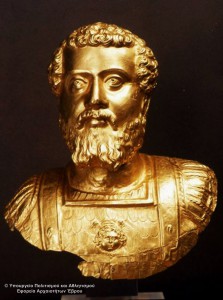 The hill of Agia Petra in south-eastern side of Didymoteicho has been largely associated with the Roman Plotinopoli. The city was founded by the Roman emperor Trajan, named in honor of his wife Plotina. This hill, in a strategic position, attracted the archaeological interest before the Second World War. In 1965, during the construction of a trench by soldiers was found a hammered gold bust of the Roman emperor Septimius Severus (193-21 AD), which is now kept in the Museum of
The hill of Agia Petra in south-eastern side of Didymoteicho has been largely associated with the Roman Plotinopoli. The city was founded by the Roman emperor Trajan, named in honor of his wife Plotina. This hill, in a strategic position, attracted the archaeological interest before the Second World War. In 1965, during the construction of a trench by soldiers was found a hammered gold bust of the Roman emperor Septimius Severus (193-21 AD), which is now kept in the Museum of
Komotini.
Systematic excavations conducted by the 19th Prehistoric and Classical Antiquities of Komotini the summer of 1977 and in the early 80s, while excavations in the area have been ongoing since 1996 until today. The excavation have revealed a large complex with wonderful Roman mosaics, which was in use from the 2nd until the end of the 6th century. It was also found part of baths with its hypocaust (the heating room under the baths). The most impressive of all the findings, is a large stone well of 12.67 m depth, the bottom of which has not yet been identified. In the northern part there is an opening that leads to a vaulted chamber, which was used to pump water from the well. The complex is a unique example of hydraulic architecture, it is associated with the water supply of the city and is probably contemporary with its foundation (early 2nd century AD).
Finally, what it is also interesting, are portable findings of the excavation, dating from the Neolithic to the Late Roman.
Source: Eastern Macedonia & Thrace
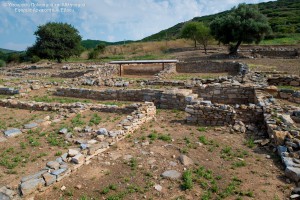 Messemvria-Zone, a colony of Samothraki the late 7th century BC, initially served the needs of the diocese in agricultural products and commercial communication with the Thracian tribes of the hinterland. But the original rural character passed almost early – in the 6th century B.C. – in a second place, as well as trading and maritime movement of goods proved to be very safe and profitable. So the city developed quickly to an important commercial center and was highly developed
Messemvria-Zone, a colony of Samothraki the late 7th century BC, initially served the needs of the diocese in agricultural products and commercial communication with the Thracian tribes of the hinterland. But the original rural character passed almost early – in the 6th century B.C. – in a second place, as well as trading and maritime movement of goods proved to be very safe and profitable. So the city developed quickly to an important commercial center and was highly developed
during the 5th and 4th century B.C.
The financial health of the city reveals the amount of two coins, established for the contribution to the fund of the First Athenian Alliance. But the penetration of Athenian power in the region, the imposition to the colonies of Samothraki a rather heavy burden of tax and possibly events that are missing completely written historical evidence, led to the gradual decline.
According to some testimonies, Aesop, the great storytellers of antiquity had originated from this city. The archaeological site of Messimvria are remnants of the Sanctuary of Dimitra and the Temple of Apollo. On the west side lies the main part of town, where among other buildings, there are two public buildings, but also an impressive location where dozens of traditional earthenware jars kept.
Source: Eastern Macedonia & Thrace
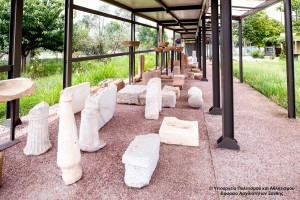 Archaeological site of Avdira, in the cape of Bouloustra includes the northern and southern precincts, the acropolis of the ancient city and its cemeteries, extending mainly to the NW, N and NE, dating from the Archaic, Classical and Hellenistic periods.
Archaeological site of Avdira, in the cape of Bouloustra includes the northern and southern precincts, the acropolis of the ancient city and its cemeteries, extending mainly to the NW, N and NE, dating from the Archaic, Classical and Hellenistic periods.
Place in the northern precinct preserved sections of the wall and one room buildings prior Clazomenia city of Asia Minor, 7th century BC., parts of the wall of Tiion, the 6th-5th century BC, boathouse of the same era, located on the
northeastern edge of the harbor before the region become a land of silting, the ruins of a sanctuary of Dimitra and Kori, dating to the 6th-4th century BC., and the Hellenistic cemetery. The main excavated and visited part of the the site is close to the current port. This is the western part of the southern precinct of the city, which distinguished the western wall, gate towers, roads and houses. First buildings that meets the visitor before entering the ancient city are houses of imperial times, they do not follow the Hippodamio system, the royal Christian cemetery of Polystylo, and luxurious bath ruins of imperial times, from which we can distinguish oval hall and stairway leading to the hypocausts. The residential phase is distinguished belongs to imperial times.
Apart from visitable parts of the space ther are much more excavated within a certain distance between them, but none of them the excavation has been completed. At the southern end rises the acropolis of the ancient city, which survives only part of the ancient wall, while the western end, the sea, is distinguished the western breakwater of the harbor. The second port city, eastern, located on the northeast side of the southern precinct. Here also distinguished the jetty and warehouses. Although the image of the ancient city is quite good, especially with regard to private residences, shops, walls and tombs of the inhabitants of the Byzantine of Polystylo, do not identified public buildings. The only public building that we know is the theater, which is located between the northern and southern wall, on a hillside, but they are so damaged they can not be visited. Right now the archaeological site of Avdira remains closed due to lack of security personnel. But there is a possibility to visit during working days and hours upon request.
Source: Eastern Macedonia & Thrace
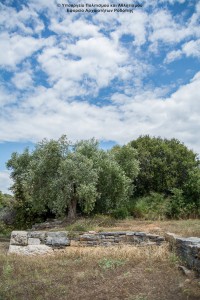 The settlement of Maronia spread over a vast area, from Ismaros Mountain to the Ptelea Lake. Several monuments are today labeled and countless others are scattered throughout the olive groves and the mountainous landscapes of Ismaro.
The settlement of Maronia spread over a vast area, from Ismaros Mountain to the Ptelea Lake. Several monuments are today labeled and countless others are scattered throughout the olive groves and the mountainous landscapes of Ismaro.
Worth seeing sights are the fortification of Agios Georgios (the megalithic Gate), the complex of Roman times, the walls of the citadel Agios Athanasios (the walls had an estimated length of over 10 km!) and the huge ancient carved granite winepress.
There is not a labeled road but 4×4 vehicle can proceed even 700 meters close to the site. It is a three minutes’ walk following the signs or the left arrows and you will arrive at the Megalithic Gate with its monolithic representations. Walking right for 15 minutes and following the signs you will reach the carved winepress.
Source: Eastern Macedonia & Thrace
 My journey to ‘DIAZOMA’ has been a long one with many ports of call: Kalamata, Ministry of Culture, Ministry of the Interior, Administration and Decentralization, Ministry of the Aegean. On the way I have been involved with the reconstruction of a town destroyed by earthquake, the enhancement of its historical centre, cultural networks, Castrorum Circumnavigatio, a programme on ancient theatres, island policies, Citizen Service Centres… Ports of call en route to a destination of which I am not yet aware, which has not yet taken a specific shape.
My journey to ‘DIAZOMA’ has been a long one with many ports of call: Kalamata, Ministry of Culture, Ministry of the Interior, Administration and Decentralization, Ministry of the Aegean. On the way I have been involved with the reconstruction of a town destroyed by earthquake, the enhancement of its historical centre, cultural networks, Castrorum Circumnavigatio, a programme on ancient theatres, island policies, Citizen Service Centres… Ports of call en route to a destination of which I am not yet aware, which has not yet taken a specific shape.
Caring for monuments has always been a special part of my life. I cannot look upon them as ruins, as something dead. I see in them living organisms transmitting messages of knowledge, wisdom, aesthetics, harmony, dialogue with the environment and nature, as transmitting messages of life. And I have always disagreed with the classic treatment of monuments, that which treats them as museum pieces, which puts them to one side, on the margins of our era, which is blind to their secret life, which ignores their own adaptability and harmonization with every historical period.
That is why, wherever I have passed, I have tried in every way to include them in the daily life of the place and the people. From the Neoclassical buildings of Kalamata and the restoration of the town’s historical centre to the opening of archaeological sites on summer nights with a full moon, all my actions have been in the same direction, aimed at the same ultimate target and inspired by the same philosophy.
Τhe ancient theatres are unique examples of exceptional architecture. Culminating achievements of ancient Greek civilization. Works of art built to host works of art. Buildings that concentrate in their structure, their parts and their details the originality, the grace, the sagacity, the expression of democracy and of citizens’ participation. In other words, the best of what the Greek spirit offers. Buildings which have been keeping the usefulness and the uniqueness of their form alive and up to date for centuries.
These characteristics led me to combine my ideas on monuments with ancient theatres. I started this particular endeavour five or six years ago. I failed. ‘Wherever you fail go back and wherever you succeed leave’, says Kazantzakis. I paid him heed. A couple of years ago, I returned. It seems that the right moment had come. The time was now ripe for a more dynamic confrontation of the monuments. The time was ripe for certain things to go ahead, because we take their fortunes into our own hands. And we help them to proceed. We take part in their development. The time was now ripe for creating a Movement of Citizens, of a large group of people, which can see beyond the miserly limits of a short-sighted age, which feels the primary right to demand transcendence of the dreary daily routine, by including monuments in our daily life.
At once I found myself surrounded by an enthusiastic and dynamic group of people, which widened in the blink of an eye. All of them, ‘as one long prepared…’ Scholars, intellectuals, artists, people in local government and pro-active citizens embraced ‘DIAZOMA’. Fellow-citizens who have decided that the research, study, protection, enhancement and, wherever feasible, the use of ancient theatres and other venues for spectators and listeners, such as ancient odeia and stadia, are also their concern. And they are resolved to take these monuments’ fortunes into their own hands, to work together dynamically, as helpers of the State and the services responsible, in the major task of including ancient theatres in modern life.
‘DIAZOMA’ has been a reality since 8 July 2008.
It aspires to be a model Association in the way it functions, in the transparency of its economic management, the effectiveness of its actions, the achievement of its goals. Our aim is not to find, nor simply to persuade, but to inspire the big sponsors, to assist the services responsible, to mobilize the Ministry of Culture, to draw more and more of our fellow-citizens along with us in our work.
And it is my hope that ‘DIAZOMA’ will be an Association that expresses a new way of thinking, of dealing with and managing affairs that concern us all. An Association that mobilizes both Citizens and State.
Stavros Benos
President
Ancient Theatres – Ancient Theatres’ Identity
Source: www.diazoma.gr
At a distance of about 45 minutes from Chalandriani a prehistoric settlement from the later years of the Early Cycladic period II has been discovered covering an area of 3.5 to 5 acres. In this area the excavations brought to light a graveyard with about 600 tombs as well as ruins of inestimable value that indicate that ceramic, stone and metalwork has been developed in the area.
Various vases, jewelry and household items were also found during the excavations in the region indicating that this was a highly developed settlement. The two archaeological sites Chalandriani & Kastri are linked with a long and rough path that is definitely worth the while as it leads into the depths of history.
Source: www.syrosisland.gr
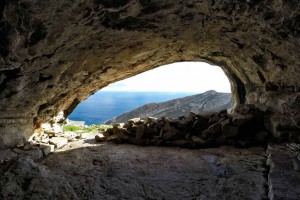 On the road to Ano Syros and shortly after the rural settlement of Kyperoussa one can find the cave of Pherecydes.
On the road to Ano Syros and shortly after the rural settlement of Kyperoussa one can find the cave of Pherecydes.
To reach the cave he must follow a small dirt road that slowly begins to go downhill leading visitors to a magnificent land nuzzled between the earth, the sky and the blue horizon. That’s where the cave where the theogonist poet and philosopher Pherecydes used to reside during the cold winter months in the 6th century BC.
Source: www.syrosisland.gr

